Genre: Shmup Developer: Taito Publisher: Taito Players: 1 Released: 1992
Taito has been around for what feels like forever. It was putting out arcade games back in the first half of the 1970s with games like Astro Race and Western Gun, while eventually creating the game that cemented its place in video game history with 1978’s Space Invaders. Taito would go on to release many arcade classics, including 1989’s Darius II… or Sagaia as it was called in the States. Sagaia was eventually released under both of its names on a number of systems after its arcade debut, with one of those consoles being the 8-bit underdog, the SEGA Master System. Ported in 1992, it saw a pretty limited release, as it only came out in Europe and Brazil. But the question is, was this port a great catch for those regions, or should it have been tossed back? Read on.
The planet of Darius has fallen into ruin. Virtually all of its people seem to have been lost to a massive attack by an unknown enemy, with only Proco and Tiat escaping to a new planet that they named Orga. It was there that they started over, trying to keep the history of their people alive. But centuries later, a distress call is picked up by the pilots Proco Jr. and Tiat Young; a call for help that comes from other descendants of those who had once called the planet of Darius home. They’re under attack, in need of help, and that’s exactly what’s going to be given to them as the two pilots rush to the source of the signal.
When it comes to its visuals, Sagaia on the Master System manages fairly well against the Genesis port and (to a lesser extent) the arcade game. The small sprites in the game lost some detail and color when compared to the aforementioned versions but not to a horrific degree. The shading done on these small sprites is more simplified thanks to the limited on-screen color count, but it still works to make them appear more three dimensional instead of flat. They also feature minor details on the bodies/wings and such that help make them better mimic their arcade/Genesis counterparts. And when it comes to the animation on these little sprites, it tends to vary a bit. Some like the green missiles, meteors and various small ships, don’t animate at all anymore, while other sprites like the power-up pods retained some nice rotation animation. However, there is one area where the game sprites tend to shine: the bosses.
These mechanized sea life battleships stand out with nicely done details and color usage, as well as in their sizes. They’re rather large by Master System standards, and while some like zone A’s Hyper Sting lost its body animation, others still contain animated arms (Grand Octopus and Alloy Lantern) like the game’s 16-bit and arcade brethren. Of course, they’re on a black background like so many other titles on the ol’ Master System, but they still look quite good and rival what was done on the Genesis port of the game.
The backgrounds in this version are rather surprising at times. Yes, some zones look flat and basic (like zones D and L), but there are more zones than not that feature nice amounts of detail, along with pretty solid color usage. Whether it’s zone A or J’s more simplified wavering effect, the multiple layers of parallax scrolling in zones like B, H and especially K, or the changing scenery in zones G and H, most of the backgrounds look rather good. At times, they could almost pass for the backgrounds in the Genesis version of the game at a quick glance. The variety in the backgrounds is also well ranged. Skimming over a star or planet, flying through bases, destroyed cities, underwater ruins and sunset-lit landscapes – there’s a diverse selection of backdrops to both watch and avoid (yes, some of them can kill you). So while there are some expected drops in quality present, the visuals in this game were handled well.
With the sound, Sagaia fairs about the same as the visuals. Some of the sound effects are pretty much just pops and hisses of static, but they do their job between your ship firing, enemies exploding, and so forth. There’s enough variety in them to make this area feel alright, and thankfully, most of them tend to not be grating or annoying. The PSG music in the game is pretty nice. Granted, you only get to hear two instruments much of the time, since the sound effects take up two of the Master System’s four sound channels rather frequently. But, when you get to hear the music with all four channels going, you can tell the compositions were given some love in the porting job. The melodies are basically all there, and where rhythms and melodies trade off at times due to there not being enough sound channels, it still feels mostly natural and not jarring. The drums aren’t all that great, but what else is new for a Master System game? So audio-wise, Sagaia manages to pull off a pretty good soundtrack with a decent variety of sound effects to go with it.
The gameplay in Sagaia sets it apart from other shmups on the Master System. First, you have 12 zones to get through, with five of those zones featuring branching paths that will take you to a different level depending on if you chose to go up or down from the level you just completed. Of these 12 zones, you’ll actually only play through seven of them consecutively before reaching one of the three endings in the game. Along the way, you’ll encounter numerous enemies that range from streams of small space ships, helicopters, gun pods and missiles, to small and massive robotic beasts that are based off of various kinds of sea life. You’ll also encounter stage hazards such as lava fireballs, moving walls, meteors, floating platforms, and mid-stage bosses that are shrunken versions of some of the first Darius games’ bosses. Yet though there’s a lot opposing you, you’re not without the means to fight back.
The game has three main weapons that you can grab power-ups for: the gun (red icons), the bomb (green icons), and a shield (blue icons). Each one can have their level increased quite a few times, allowing you to create a much wider shot for your main weapon, fire multiple bombs at once, and gain more powerful shields that allow you to take more hits before dying. Just make sure you don’t die, because if you do, you’ll lose all of your weapon power (guns and bombs), while thankfully retaining the level shield you’d reached (green, silver or gold) up to that point. You can also score bonus points for shooting all of the ships in a line/group of enemies, and you’ll even occasionally come across a screen-clearing bomb that can both kill all of the smaller enemies on-screen, as well as at least heavily damage the mid-bosses and stage bosses. So while the enemies will be numerous, you’ll have a way to leave them as nothing but rubble in your wake.
And now we have to ask, “What’s wrong with the game?” Well, there are a number of problems found in the Master System port of Sagaia, but none of them are utterly game-breaking. Instead, they’re more annoying or disappointing than anything that would make the game unplayable. That said, they do add up. For starters, the amount of sprites that this game puts on-screen at times is admirable, but it comes at a cost. Between the small enemy sprites, their bullets, your ship and your shots, you’ll find moments when some of the sprites get lost due to the flicker that will occasionally crop up. You’ll also find areas that chug a bit in framerate when things get more hectic.
To the game’s credit, these issues are usually either short-lived during the stages or don’t result in enemies utterly vanishing from sight. But they can really stand out at the stage bosses. Bosses like Drio Sawm, Leadain, Grand Octopus, and others are made up of both large and small sprites, with animated arms that can tax the Master System CPU big-time. The end result is the action dropping to half speed or less at times, and sizable amounts of flickering when the sprites line up horizontally.
Up next, we have another sizable area of disappointment that comes from how much was trimmed out of the game. Sure, there was no way the programmers were going to get 28 zones and five endings into a Master System cart, not without making some big compromises on the graphics. But going from 28 zones and five endings, to 12 zones and three endings is still a big loss that can’t be written off like it’s nothing. That’s over half of the game left on the cutting room floor, which also causes its replayability factor to take a hit.
On the more minor side of things, there’s the occasional redesigning that took place in spots, though some of these changes are more minimal than others. For example, the smaller robotic fish that populatezone A? They were redone and now look like an angel you’d put on top of your Christmas tree. I’m not entirely sure why this was done, but you’ll find a few other redesigns scattered throughout the game. Lastly, there’s a bit of a visibility issue at times. On zones J and K, it can prove tough to see the small ships, the bullets and such due to the intensity of the background colors. Enemies and bullets nearly vanish into it, even without the flicker that crops up, and this can make sections seem unjustly tough to get through.
So what can we say about this 8-bit port of the Taito classic? I think one can genuinely say that Sagaia is about as good as it could be on the Master System. The visuals are nice, the music was handled well, the gameplay is intact, the controls and hit detection are solid, and it’s cool to still have some areas where you can choose what stage to go to next. Hell, even the opening from the arcade game is still there, along with keeping a few things arcade accurate that the Genesis version altered (like the small fish you fight inside of Alloy Lantern). That said, you can’t ignore the flicker, slowdown, and the copious amount of content cuts this game had to endure to fit into a cart that’s no bigger than 4Mb. But despite these flaws, it’s hard not to come away impressed by what was done on the system. It still feels and plays like a Darius game, staying surprisingly close to the Genesis port at times in terms of visuals. And while it may be only a few cuts from the full dish of Tuna Sashimi that was Sagaia/Darius II in the arcade, it still comes off as a good, enjoyable shmup for SEGA’s 8-bit console.
SCORE: 8 out of 10

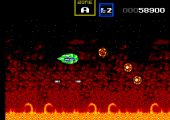
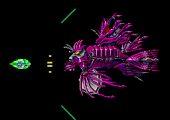
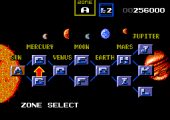
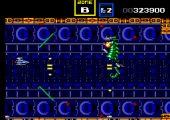
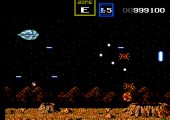
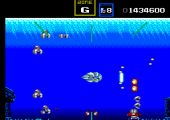
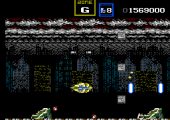
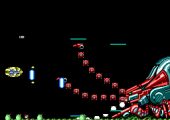
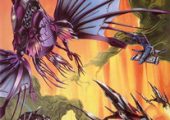
Recent Comments